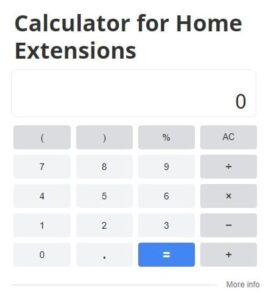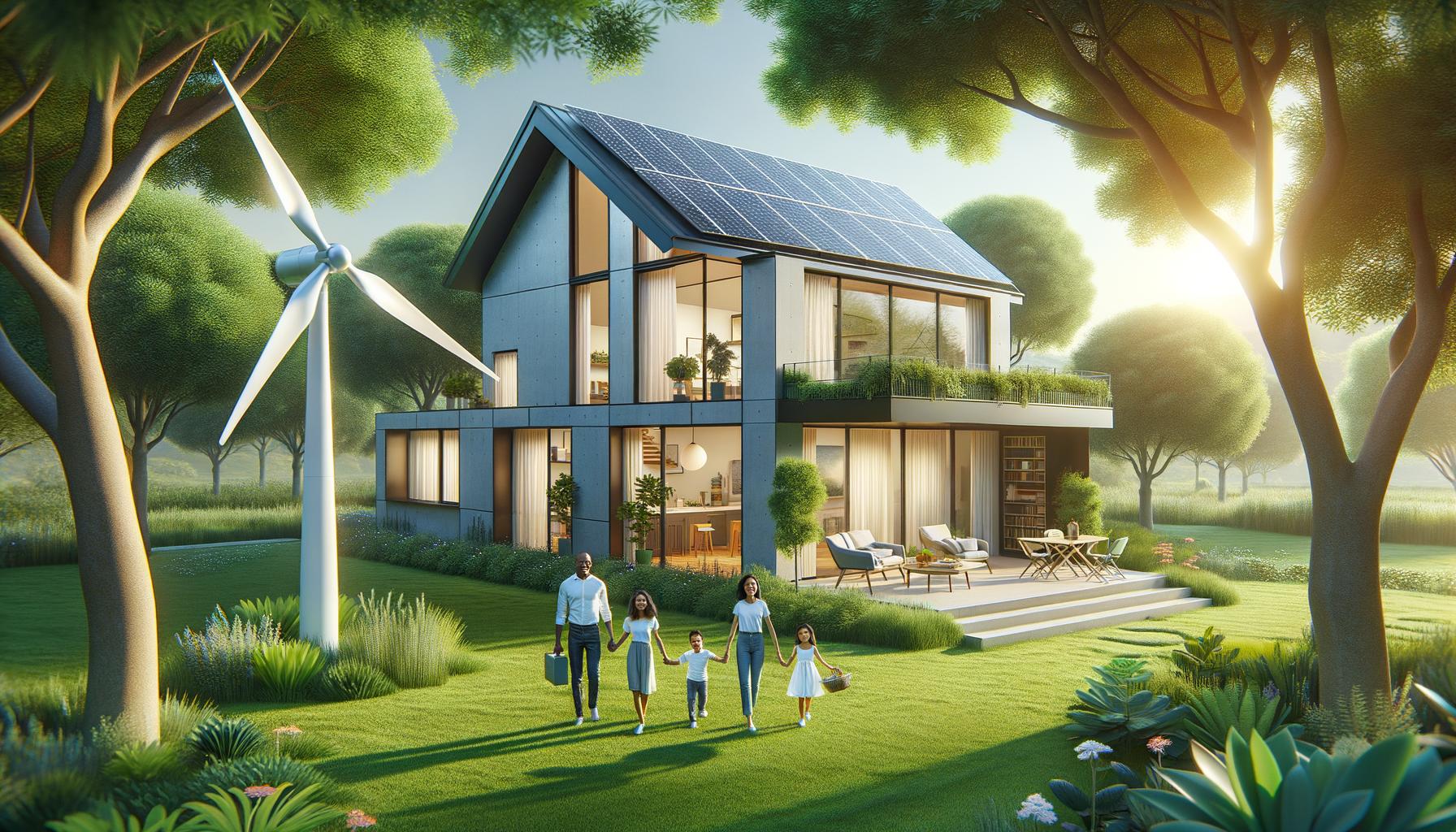
At Home Owners Association, we understand the importance of creating energy-efficient homes.
The features of an energy-efficient home not only reduce utility bills but also contribute to a more sustainable future.
In this blog post, we’ll explore key elements that can transform your house into an eco-friendly haven.
How to Insulate Your Home for Maximum Energy Efficiency
At Home Owners Association, we know that insulation forms the foundation of an energy-efficient home. Proper insulation reduces energy bills and increases comfort significantly. Let’s explore the key areas where insulation makes the biggest impact.
Walls and Attics: Your Home’s Thermal Shield
The walls and attic of your home are prime areas for heat loss. Insulation that fills building cavities reduces airflow or leakage and saves energy. For Australian homes, the National Home Energy Rating Scheme (NatHERS) recommends R-values of 2.5 to 3.5 for walls and 4.1 to 7 for ceilings, depending on your climate zone.
To achieve these ratings, you should consider blown-in cellulose or fibreglass for existing walls, and batts or rolls for attics. If you’re building new, spray foam insulation offers excellent air sealing properties along with high R-values.
Sealing the Envelope: Windows, Doors, and Drafts
Even the best insulation can’t compensate for air leaks. Weatherstripping around doors and windows prevents drafts effectively. For windows, double-glazing can reduce heat loss by up to 30% compared to single-pane windows.
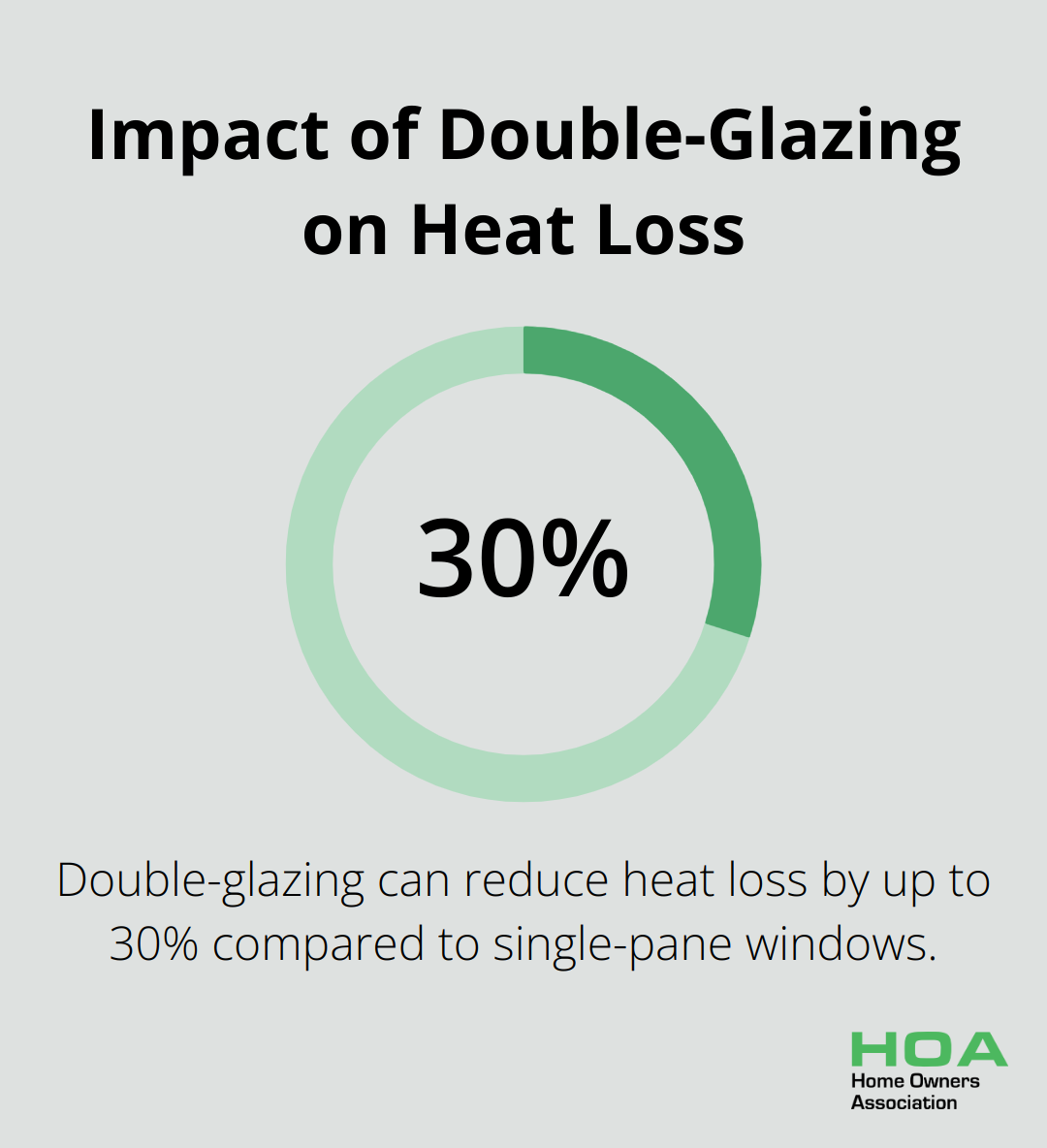
To tackle hidden air leaks, you should conduct a blower door test or use a thermal imaging camera to identify problem areas. Common culprits include gaps around electrical outlets, plumbing penetrations, and recessed lighting. Use caulk or expanding foam to seal these leaks and watch your energy bills drop.
Beyond the Basics: Pipes and Ducts
Don’t overlook your home’s circulatory system. Insulating your hot water pipes can raise water temperature 2°F–4°F hotter than uninsulated pipes, allowing you to lower your water heater temperature without sacrificing comfort. For ductwork (especially in unconditioned spaces like attics or crawl spaces), proper insulation can improve HVAC efficiency by up to 30%.
Tailoring Insulation to Your Home
Insulation is not a one-size-fits-all solution. Climate, home design, and local building codes all play a role in determining the best insulation strategy for your home. For personalised advice and access to trade discounts on insulation materials, Home Owners Association membership provides valuable benefits. Our expertise can help you navigate the complexities of home insulation and achieve maximum energy efficiency.
As we move forward, let’s explore how energy-efficient appliances and systems can complement your well-insulated home to further reduce energy consumption and costs.
How Smart Appliances and Systems Boost Home Efficiency
At Home Owners Association, we’ve witnessed the transformative power of energy-efficient appliances and systems in reducing energy consumption and costs for homeowners. Let’s explore some cutting-edge technologies that can turn your home into an energy-saving powerhouse.
The ENERGY STAR Advantage
ENERGY STAR certified appliances stand as a cornerstone of any energy-efficient home. When you shop for new appliances, look for the ENERGY STAR label to ensure you select the most efficient options available. You can use the Energy Rating website and Energy Rating Calculator to learn more about energy-efficiency ratings for appliances and compare specific models.
High-Efficiency HVAC Systems
Heating and cooling consume nearly half of a home’s energy. High-efficiency HVAC systems can slash this consumption significantly. Newer air conditioners can be 30 percent to 50 percent more efficient than models made in the 1970s and 20 percent to 40 percent more efficient than models made only 10 years ago. Options like ductless mini-split systems or geothermal heat pumps offer even greater efficiency gains.
Smart Thermostats: Your Energy-Saving Companion
Programmable and smart thermostats serve as powerful tools for managing your home’s climate control. These devices automatically adjust your home’s temperature based on your schedule and preferences. The U.S. Department of Energy estimates that you can save up to 10% a year on your heating and cooling bills by lowering your thermostat 7-10 degrees for 8 hours a day.
Illuminate Savings with LED Lighting
LED lighting offers a simple yet effective way to reduce energy consumption. LEDs use up to 75% less energy and last 25 times longer than incandescent lighting. Pairing LEDs with occupancy sensors can further increase savings by ensuring lights operate only when needed. Some homeowners report cutting their lighting energy use by half or more after switching to LEDs and installing sensors.
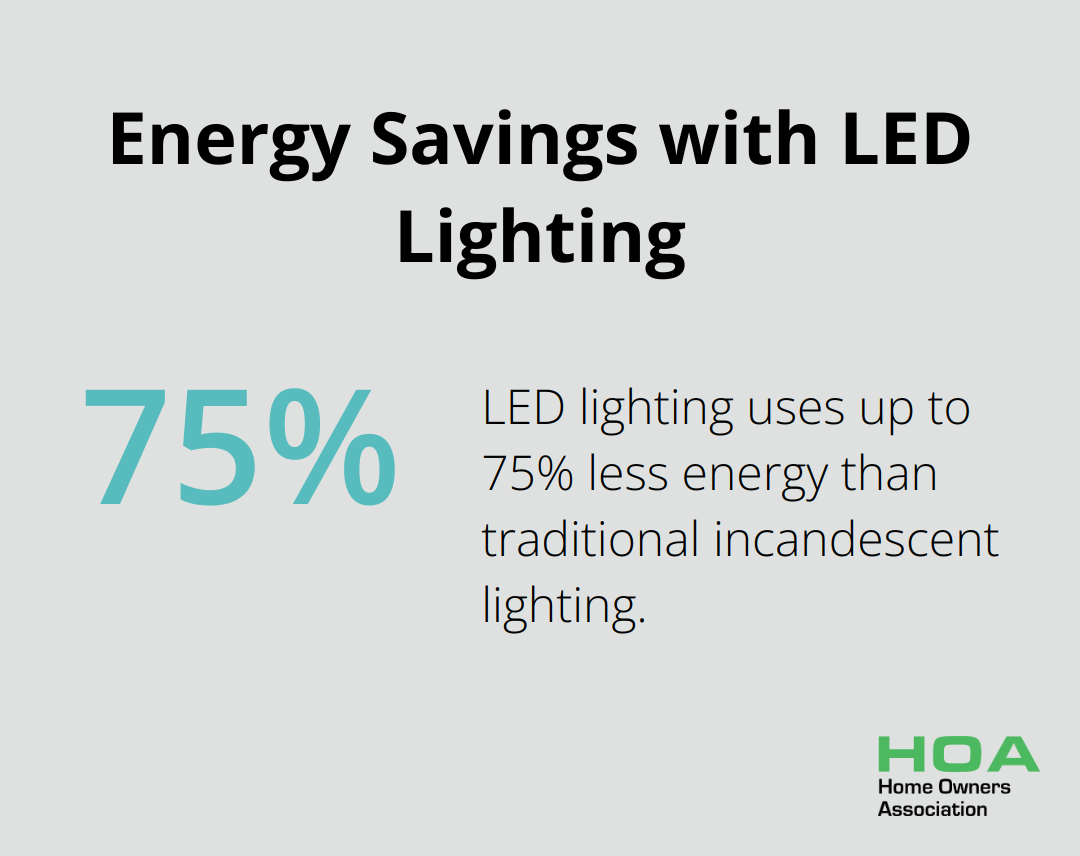
Water-Saving Fixtures for Enhanced Efficiency
Low-flow water fixtures often go overlooked in home energy efficiency discussions. These fixtures can reduce water consumption by 25-60% without compromising performance. Low-flow showerheads, for example, can save the average family 2,700 gallons of water per year. This not only conserves water but also reduces the energy needed to heat it, resulting in lower utility bills.
While these energy-efficient appliances and systems may require a higher initial investment, the long-term benefits far outweigh the costs. As we move forward, let’s explore how renewable energy solutions can complement these efficient systems and further reduce your home’s environmental impact.
Harnessing Renewable Energy at Home
Solar Power: The Residential Revolution
Solar panel installation has become more accessible and affordable. For a good quality 5kW solar system, you’re likely to pay between $5,000 – $8,000. The cost of a 5kW system is impacted by three major price variables: Retail price, government rebates, and installation costs.
To maximise solar efficiency, consider factors like roof orientation, shading, and local climate. South-facing roofs in the Southern Hemisphere typically receive the most sunlight. Professional installers can conduct a site assessment to determine the optimal setup for your home.
Geothermal Heating and Cooling: Tapping Earth’s Energy
Geothermal systems leverage the constant temperature beneath the Earth’s surface to heat and cool homes. While installation costs are higher than traditional HVAC systems, geothermal can reduce heating and cooling costs by up to 70% (according to the U.S. Department of Energy).
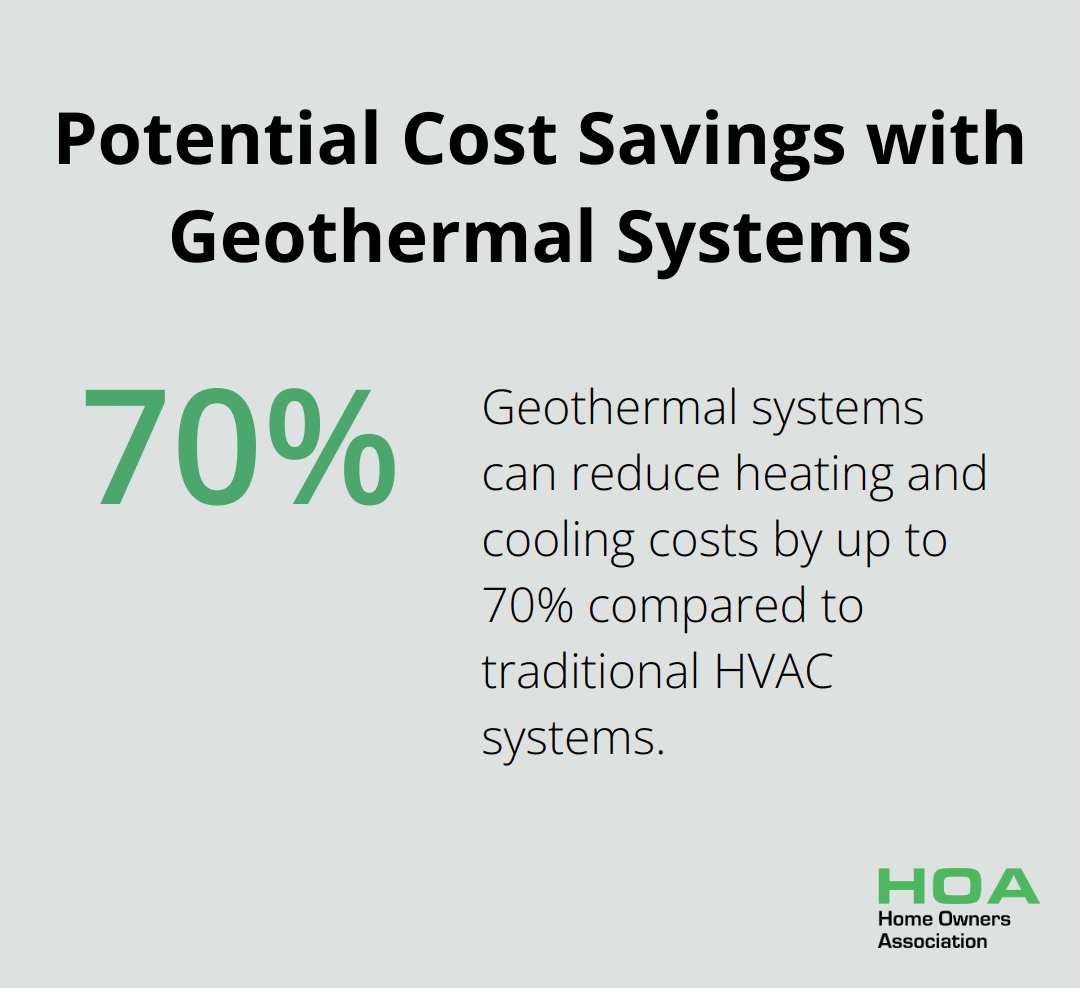
These systems work best in areas with moderate climates and sufficient land for underground loop installation. A geothermal specialist can assess your property’s suitability and potential energy savings.
Energy Storage: Maximising Renewable Potential
Battery storage systems allow you to store excess energy generated by solar panels or wind turbines for use during peak hours or power outages. The Tesla Powerwall, for example, can store up to 13.5 kWh of energy (enough to power an average home for a full day).
When paired with solar panels, battery storage can increase self-consumption of solar energy from around 30% to over 60%. This translates to greater energy independence and lower electricity bills.
Wind Power: Harnessing the Breeze
Small-scale wind turbines can supplement your home’s energy needs, especially in areas with consistent wind speeds. These systems work well in rural or coastal regions with open spaces.
Before installing a wind turbine, conduct a wind resource assessment to determine if your location has sufficient wind speeds. Local zoning laws and regulations may also impact the feasibility of residential wind power.
Microhydro Power: Water as an Energy Source
If your property has a flowing water source, microhydro power systems can provide a constant supply of clean energy. These systems work by harnessing the energy of moving water to generate electricity.
Microhydro systems are highly efficient and can operate 24/7, unlike solar or wind power which depend on weather conditions. However, they require specific site conditions and may be subject to environmental regulations.
Final Thoughts
The features of an energy-efficient home work together to reduce energy consumption, lower utility bills, and minimise environmental impact. Proper insulation, Energy Star certified appliances, and high-efficiency HVAC systems form the foundation of an efficient home. Smart thermostats, LED lighting, and renewable energy solutions like solar panels and geothermal systems take efficiency to the next level by optimising consumption and generating clean power on-site.
Energy-efficient homes offer improved comfort, better indoor air quality, and increased property value. They also contribute to a more sustainable future by reducing greenhouse gas emissions and reliance on fossil fuels. As energy costs rise, the financial advantages of efficiency upgrades become even more significant over time.
To start improving your home’s energy efficiency, conduct a professional energy audit to identify areas for improvement. Prioritise insulation and air sealing, then gradually replace old appliances with energy-efficient models. For personalised advice and access to trade discounts on energy-efficient materials and appliances, consider joining the Home Owners Association.





